1. How does light propagate?
2. How can we see?
3. The eye
4. Light reflection - how does a mirror work? - angle of
incidence, angle of reflection
5. Refraction of light
* Air - Water
* Air - Glass
* Glass - Water
6. Convex and concave lenses
How does light
propagate?
Light consists of electromagnetic waves. These waves consist
of electric and magnetic parts. The light travels at a speed
of 300 000 km/sec. This is how light is envisioned.
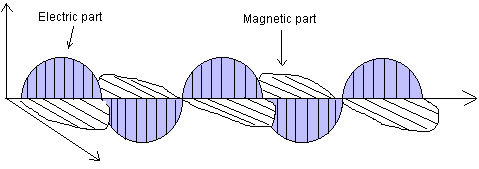
How can we see?
All electromagnetic waves carry a certain amount of energy.
This energy is greater the shorter the distance between the
wave crests. In a certain range of wavelengths, the energy
is sufficient for certain substances in the eyes to
temporarily detach. These substances are the eye cones and
eye rods. These proteins are to be found in the eye retina.
The eye rods respond to dim light. The eye cones translate
various electromagnetic wavelengths to the colors
represented in the rainbow. All these signals are then
passed from the retina at the back of the eye, through the
optic nerve. The optic nerve is connected to the visual
cortex, located at the back of our brain. In this way we
become aware of what we see.
We can see the rainbow colors. UV (ultra violet) radiation
and IR (infrared) radiation are also electromagnetic waves,
but we cannot see them. Sunburn is the result of the sun's
UV rays. Infrared radiation also comes from the sun.
IR-radiation is perceived as heat. The shorter the
wavelength, the more energy the electromagnetic radiation
contains. UV radiation is therefore more energetic than IR
radiation.

1 nm = 1 nanometer, i.e. one billionth of a meter (1/109 m)
The eye
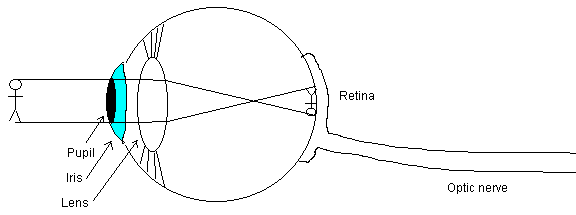
Light reflects from the human being and travels towards the
eye. The light travels trough the pupil and refracts through
the lens. Then the human being is reproduced up side down on
the retina.
The retina consists of rods and cones. The cones react on
the light rays represented by the rainbow colors. The rods
react on dim light. When hit by a sunray the rod or cone
falls apart. A nerve impulse arises and travels through the
optic nerve to the visual cortex at the back of the brain.
We thus become aware of what we see.
Light reflection - how does a mirror work? - angle of
incidence, angle of reflection

A light ray hits a mirror. The ray reflects and the angle of
incidence (i) equals the angle of reflection (r).
The surface normal is an imaginary line. Towards this, the
angle of incidence and reflection are depicted.
Refraction of light - "Air - Water" - "Air - Glass" - "Glass
- Water"
i = angle of incidence
b = angle of refraction
Note the vertical lines are the surface normals.
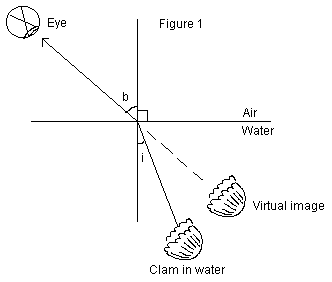
Light reflects from the clam and refracts through the water
and finally hits the eye. The brain behind the eye thinks
the clam is in the light ray prolongation below the water
surface. When man is to catch the clam with his/her hand it
will grab above the place where the clam actually is. This
fake image is called a virtual image.
Note - the ray in the example, goes from water to air.
When light goes from a lighter to a denser medium, the rays
refract towards the surface normal. (Figure 1 and 2).
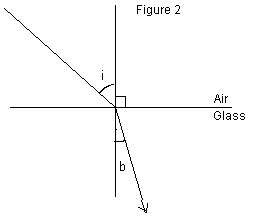
When light goes from a denser to a lighter medium, the light
refracts from the surface normal. (Figure 3).
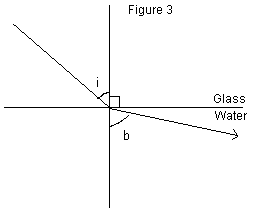
Convex and concave
lenses
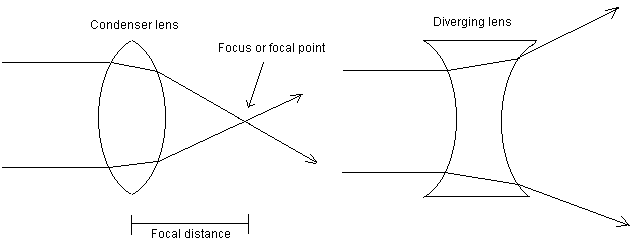
To the left is shown light refraction through a condenser
lens and to the right a diverging lens. The condenser lens
is also called a “convex lens” and the diverging lens is
called a “concave lens”.
Copywrite NGU, Northern Pontifical Academy 2025 (A.I.C.)